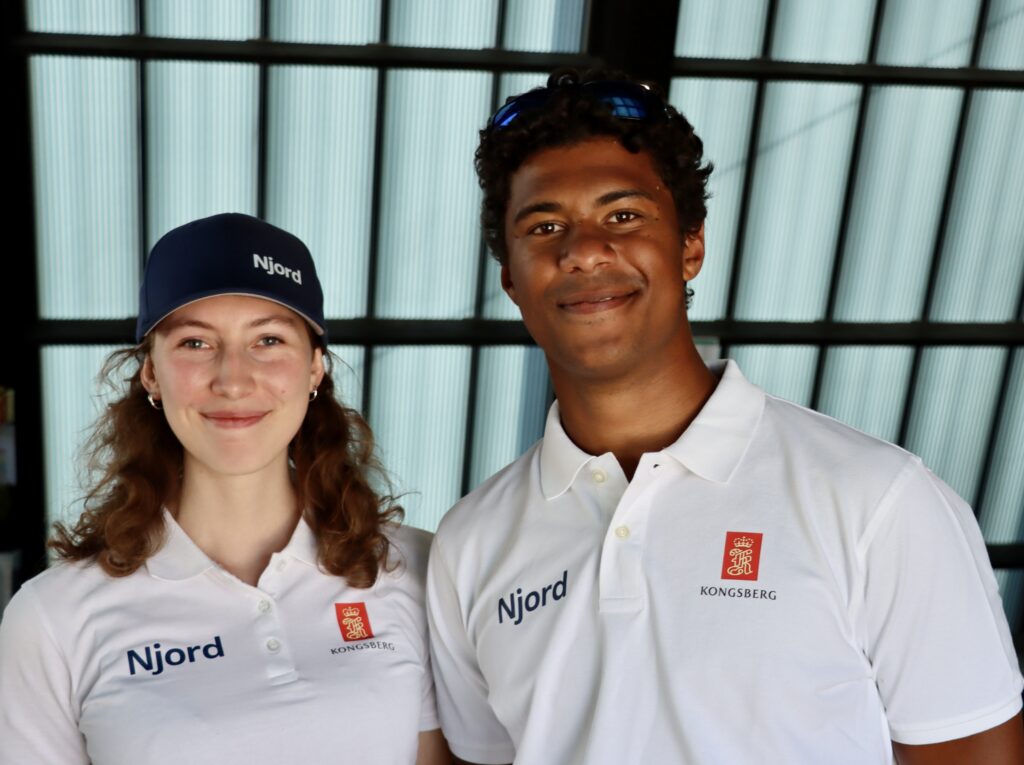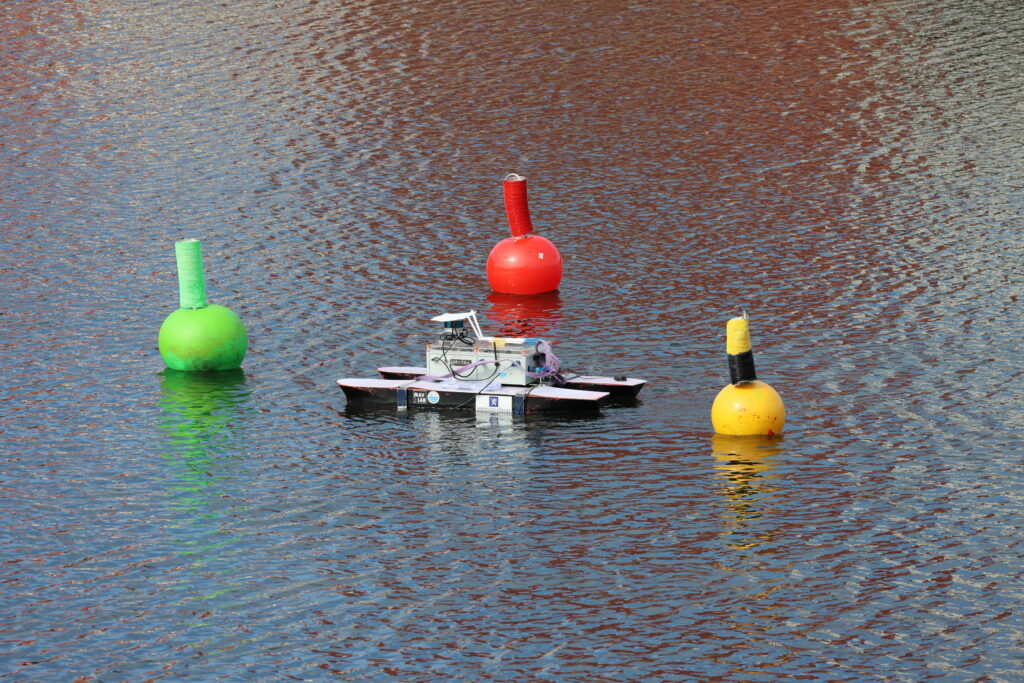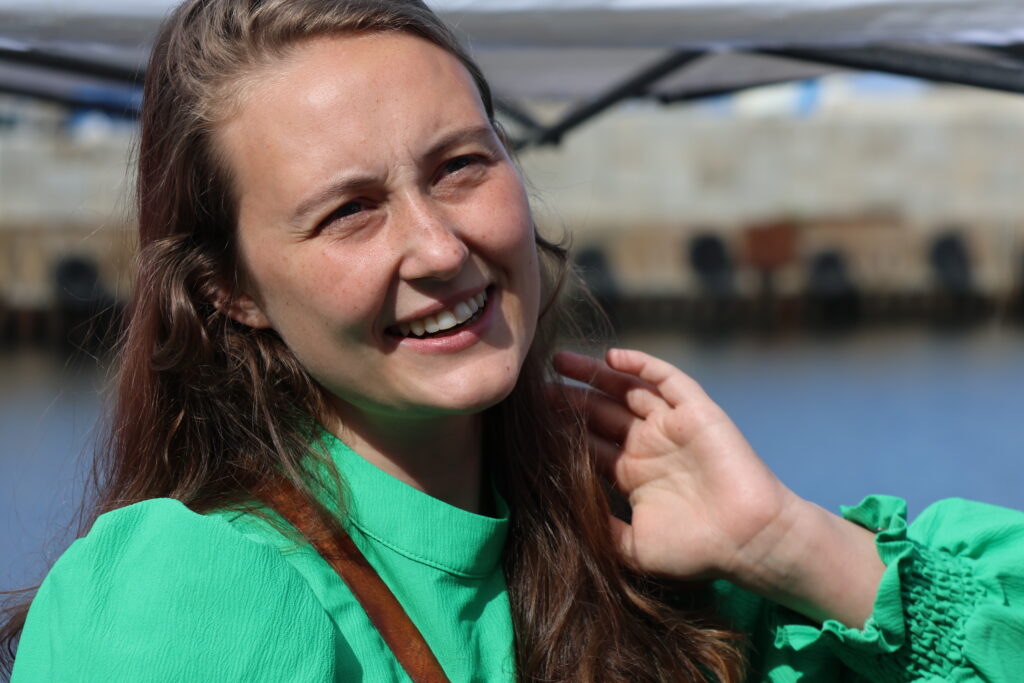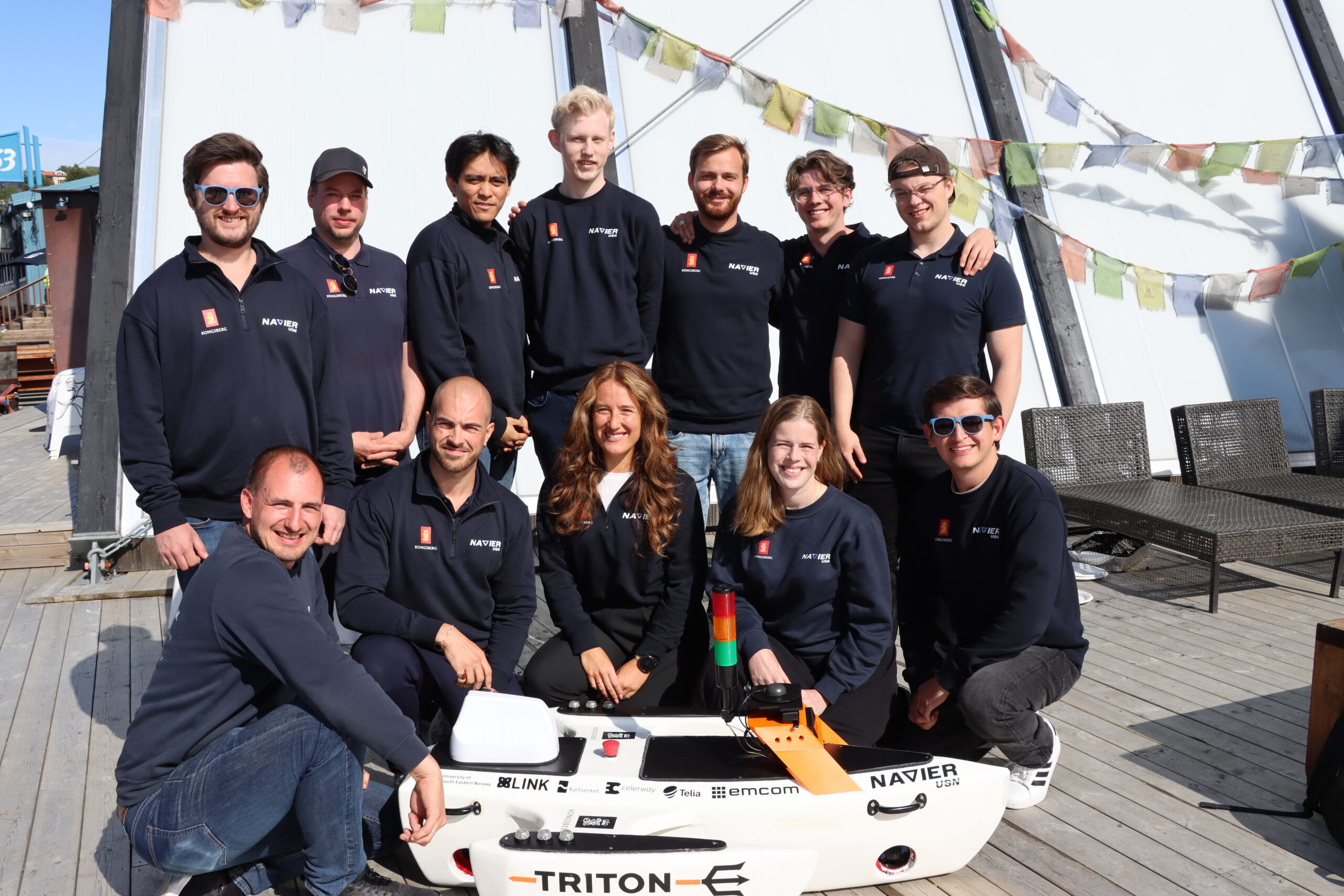Qvale highlights self-driving Teslas and airplanes that land entirely on their own. The development of autonomous ships is lagging behind. NTNU students are addressing this by organizing an international student championship:
For two weeks, student teams from three continents have gathered in Trondheim to compete for the best autonomous vessel designed and built by students.

“Our goal is to give students the opportunity to challenge themselves and put theory into practice. We want to inspire students to become world-leading engineers in autonomous solutions for vessels,” says Qvale.
The vessels are tested in maneuvering, navigation, collision avoidance, and docking.
Seven student teams from five nations
A total of seven teams from various technical universities participated in this year’s competition:
- Vortex NTNU – Norway
- Navier USN – Norway
- AGH Solar Boat – Poland
- Técnico Solar Boat – Portugal
- StrathVoyager – Scotland
- Aritra Oceana – India
- Iceberg ASV – Canada
However, it was not NTNU’s team Vortex that shone in the competition this time. Navier from the University of South-Eastern Norway (USN) campus in Horten took a fairly overwhelming victory.
Técnico Solar Boat from Portugal took second place for the second time, and AGH Solar Boat Team from Poland came in third.
Learned an incredible amount

“After we didn’t do so well in the competition last year, we got even more determined,” says Sara Ajzenhamer-Selnes, who is the project leader for Navier along with Markus Marstad.
She is in her second year of Economics and Management at USN.
Of the teams participating, Navier is the youngest and smallest organization: They were founded last year and consist of 14 members who have put in a great effort to be ready for the competition.
“The fact that we are at the bachelor’s level, while the other teams are at the master’s level, makes it feel great to be able to compete. It has been very nice to get to know the other teams, and we have learned an incredible amount!” says Selnes.
She highlights the interdisciplinary nature of the team as a key success factor.
Collaboration during the competition
Selnes appreciated that the team received good input all along from people on the other teams: “Have you thought about …” has been a common phrase. Often, it’s something they hadn’t thought about.
She mentions that two students from the Mechanical Engineering program – Lise Trehjørningen and Jacob Prieto Lopez – have built the new hull for the boat – a trimaran
“Its first system test on water was on July 18!”

Qvale also emphasizes that the most important aspect of the entire competition is the collaboration – even between the teams.
“They learn from each other. Already now, it has been agreed that the team with the best AI data on buoys will make this data open source, so that the next competition will be at a higher level,” he explains.
Autonomous solutions for vessels are divided into four levels – from level 1, where they assist humans with various operations, to level 4 – fully autonomous vessels where humans in control centres on land only monitor that things are going as they should. The competition is at level 4.
It’s human to err
Why do the students think maritime autonomy is important?
The good thing about autonomy is that repetitive tasks where humans sometimes make mistakes can be done more safely and with fewer errors,” says Trehjørningen.

A 2018 study by Allianz estimated that between 75 and 96 percent of all shipping accidents are due to human error, often caused by fatigue, misjudgment, or inadequate training.
Selnes believes it is important for students to gain insight into how autonomy works in practice to be able to contribute to its further development after graduation.
Development of autonomy in Norway and the world
In recent years, the development of autonomous vessels has accelerated. The startup Zeabuz, together with the company Torghatten, launched Estelle, the world’s first commercial ferry, in Stockholm last year.
Zeabuz was founded by former NTNU students.
Norwegian MV Yara Birkeland became the world’s first electric container ship to operate autonomously in 2022. Due to regulations, there is still a crew of three on board.
Testing of autonomous ships is taking place in several countries, including in connection with Dutch offshore wind farms, cargo ships in France, and freight ships on the Great Lakes in the USA.
New round next year

“We are excited to host next year’s World Championship in Autonomous Maritime Technology in Trondheim,” says Line Ingebrigtsen Fjørstad, Commissioner for Environment, Transport, and Business in the technology capital of Trondheim.
Together with Michelle S. Wright and Anne Reinton from Trondheim Municipality, she visited the competition
It is the second time that NTNU students in the Njord Challenge student association have organized a physical competition.
At Nyhavna, Njord Challenge borrows facilities and is co-located with, among others, NTNU’s Shore Control Lab and Ocean Autonomy Cluster.
The competition costs around one million NOK to organize, with free food, accommodation, and transport for participants, various equipment, and more, so sponsorship has been crucial to making it all possible.

